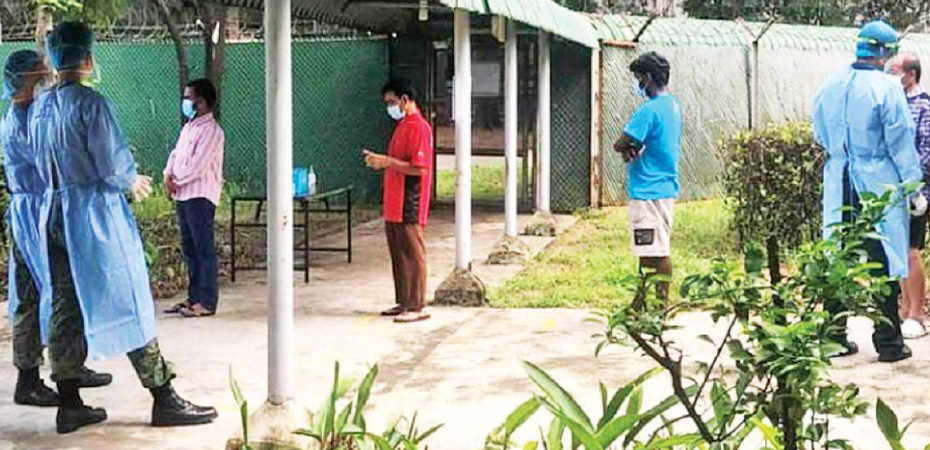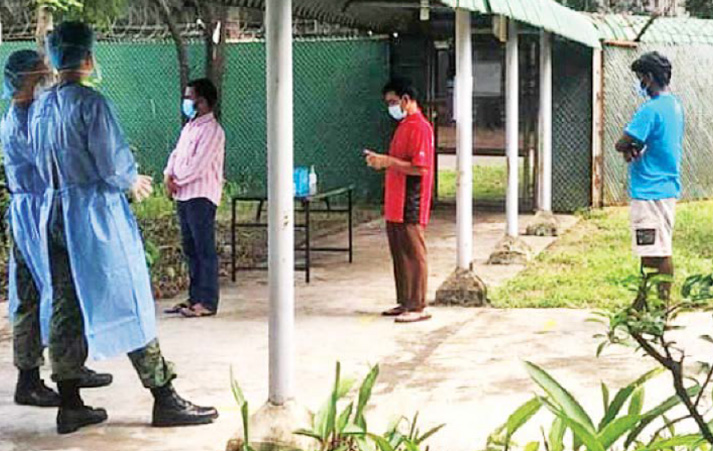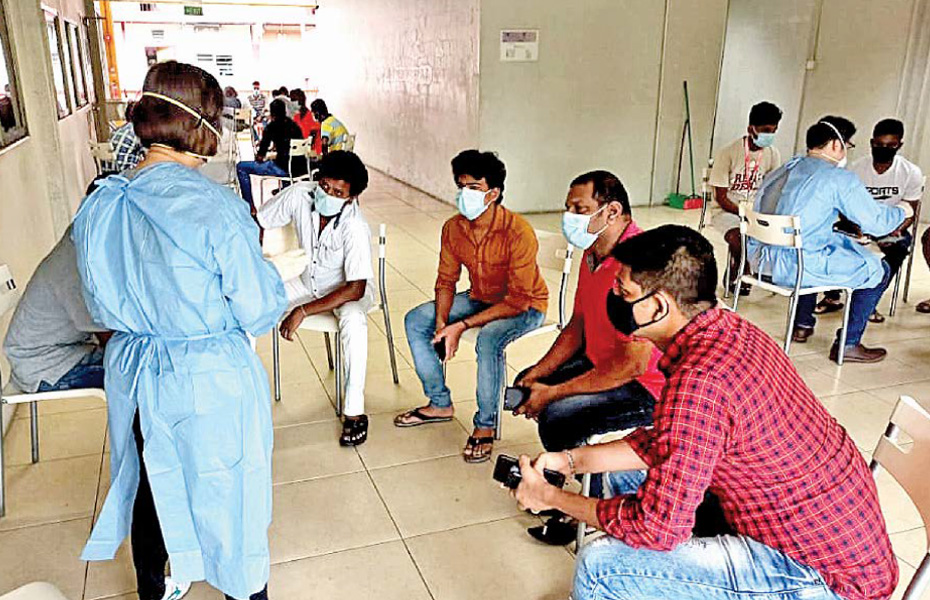Numerous points of friction on the ground often made things more complex and inefficient. For instance, soldiers had to make sense of nominal rolls of different versions and formats, provided by 1,140 Factory Converted Dormitories and 168 Construction Temporary Quarters. So the task forces adapted an SAF process, known as the Battle Procedure (BP), to analyse their mission, form a collective appreciation and analysis of the situation at hand, and develop variegated action plans to cater for as many eventualities as possible.
Soldiers had to make sense of nominal rolls of different versions and formats, provided by 43 Purpose-Built Dormitories, 1,140 Factory Converted Dormitories and 168 Construction Temporary Quarters.
EHTF took a leaf from HQ Infantry and BMTC's expertise in processing thousands of recruits and NSmen at a time, to ensure a smooth flow of migrant workers into the SAF camps. However, the soldiers on the ground found it a challenge to manage the increasing flow of workers, not only because of the numbers but also because they were completely unfamiliar as they had never interacted with migrant workers before.


In-processing migrant workers into their temporary “homes” in SAF camps.
Source: MINDEF
To systematically enhance their processes in managing the migrant workers, EHTF's ground commanders performed a Collective Appreciation of Situation. This review yielded insights into the informal social networks among the migrant workers. EHTF realised that they could work through charismatic and influential leaders among them to perform more effective outreach. In the process, these leaders took ownership of what needed to be done and became powerful advocates of what EHTF wanted done in the dormitories. Through them, EHTF was also able to provide reassurance and a semblance of normalcy to the workers who had suddenly found themselves in new “homes”.

SAF personnel working with migrant worker leaders in the dormitories.
Source: MINDEF
The SAF's operational experience in the dormitories showed that the deliberate application of ALP and BP before, during, and after our operations served us well. These processes ensure that we constantly learn from our experience, anticipate emerging situations, exploit fleeting opportunities, and refine best practices to stay ahead of the curve. They gave the SAF task forces greater capacity to develop more comprehensive solutions beyond migrant worker dormitories in the fight against COVID-19.
Looking back, it was an uncertain period for about 7 to 10 days, when the mission demands changed, on an almost-daily basis. But a clear Mission Analysis, as taught in the SAF Battle Procedure, allowed us to decide what needed to be done as a baseline, and what were the special-to-type arrangements which could only proceed after the decision on camp usage had been made. To me, it was a good example of the SAF's training coming to life, and being put into use in an operational setting.
BG Chua Jin Kiat
Commander EHTF
We were faced with the massive task of stemming the spread of COVID-19 in the migrant worker dormitories while caring for them and supporting them, so we had to move fast. We relied on mechanisms that have served us well over the years and applied their principles to the new mission. We forged cohesive teams across organisational and cultural lines. And we adapted to challenges even as they evolved.
BG Seet Uei Lim
Commander JTF(A)